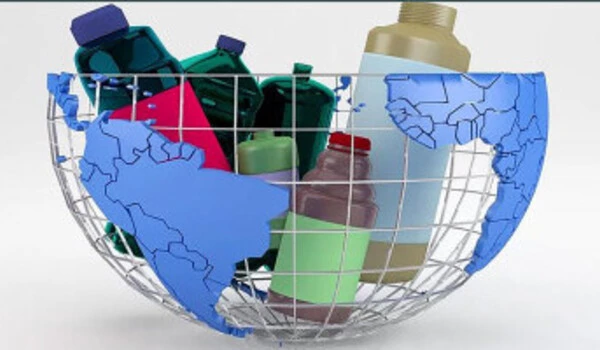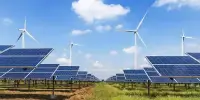Producers have a responsibility to design and produce sustainable packaging that is recyclable, reusable, and made from environmentally friendly materials. They should also be responsible for the end-of-life management of their products, which includes collecting, sorting, and recycling or disposing of packaging waste.
Plastic packaging waste can be found everywhere. Our plastic bottles, food wrappers, and grocery bags pollute the environment and litter the landscape. The Great Pacific Garbage Patch, an area twice the size of Texas, is made up of plastic waste carried by currents from all over the world and converges in the Pacific Ocean near Hawaii. The floating waste degrades into microplastics, which are consumed by fish and, in turn, by humans who consume the fish.
Only about 14.5% of plastic waste in the United States is recycled; the majority ends up in landfills, where it takes hundreds of years to degrade. Historically, the United States and other developed countries shipped their plastic waste to Asia, but many developing countries are now refusing to accept more waste.
A new study by an international team of researchers explores the global patterns of plastic packaging waste. The study finds three countries – the U.S., Brazil, and China – are the top suppliers of waste.
We wanted to track the waste plastic packaging in the global supply chain. This research leads us to the conclusion that the problem is a shared responsibility of economic agents ranging from producers and their intermediaries to retailers and consumers.
Sandy Dall’erba
“We wanted to track the waste plastic packaging in the global supply chain. This research leads us to the conclusion that the problem is a shared responsibility of economic agents ranging from producers and their intermediaries to retailers and consumers” Sandy Dall’erba, professor in the Department of Agricultural and Consumer Economics (ACE) and director of the Center for Climate, Regional, Environmental, and Trade Economics (CREATE) at the University of Illinois, is one of the study’s co-authors.
Dall’erba and his colleagues calculated plastic packaging waste transaction flows using EXIOBASE, a global, multiregional input-output database, in conjunction with World Bank data.
The researchers found North and South America together generate 41% of the world’s production of plastic packaging waste, mostly from the U.S. (19% of world production) and Brazil (13%). Europe is next with 24%, and Asia follows with 21%, most of which is generated in China (12%).

When looking at consumers, North and South America are again responsible for the most waste. Combined, the Americas represent 36% of the world plastic packaging consumption, followed by Asia at 26% and Europe at 23%.
“High-protein food such as meat, fish, and dairy is a trademark in the Americas and those generate a lot of plastic packaging waste,” Dall’erba explains. “For instance, every 1 kg (2.2 lbs.) of fish consumed will lead to an average of about 1.6 kg (2.5 lbs.) waste. This includes plastic bags, trays, and cellophane used to wrap and cover the fish during transportation, storage, and sales.”
International exports further exacerbate the problem, accounting for about 25% of global plastic packaging waste.
“Plastic is difficult to replace. There is no other material that can keep a food product fresh while being shipped around the world “He claims. “We must continue to develop technologies that make plastics more biodegradable, such as algae-based products. However, stricter regulations are required to discourage the production and use of plastic packaging.”
International treaties, such as the Kyoto Protocol, typically focus on production restrictions and fees. However, this provides developed countries with a strong incentive to shift their most polluting activities to developing countries. Dall’erba observes that at the global level, it is a zero-sum game because you simply delegate the problem to another location.
According to the researchers, producers and consumers must share responsibility and costs.
“All agents in the supply chain, as well as final consumers, require incentives to reduce their use of plastic. Examples include waste management taxes and refunds for returned plastic bottles “Xiang Gao, the paper’s lead author, explains. Gao is a researcher at the Chinese Academy of Sciences (CAS) Academy of Mathematics and Systems Science in Beijing, China.
“Other steps could include prohibiting single-use plastic straws or charging for grocery store plastic bags,” he adds. “Consuming locally grown, seasonal food would be beneficial, as would improved transparency about the true recyclability associated with the resin identification code stamped on plastic packaging.”
















